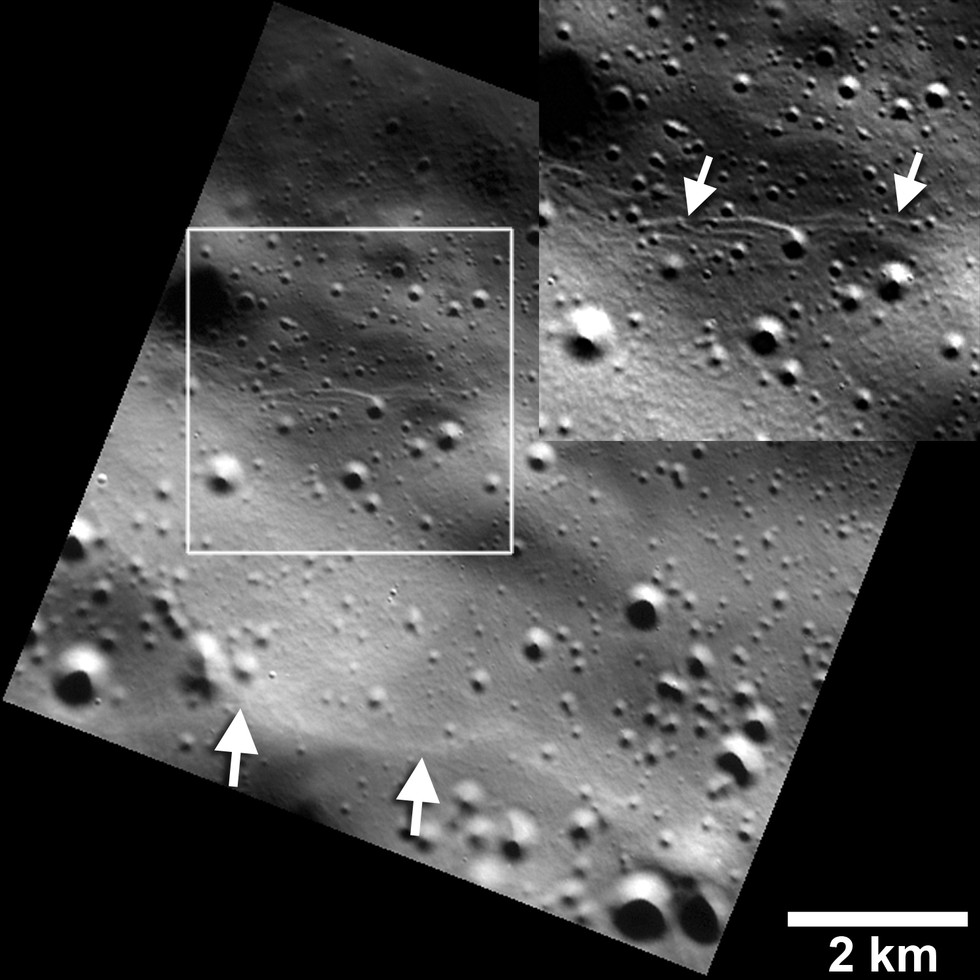In 2015, NASA's MErcury Surface, Space ENvironment, GEochemistry, and Ranging (MESSENGER) mission ended in spectacular style, smashing into the planet's surface after being in orbit since 2011. The spacecraft revolutionized our understanding about Mercury, revealing new facts about the world's magnetic field, composition, the existence of ice in its shady caraters and that the world had physically shrunk since formation.
Now, planetary scientists have used observations from MESSENGER during its final months in a low-Mercury orbit to see small geological features called scarps that could have only been formed if Mercury's geology is currently active. In other words, Mercury continues to shrink today.
 |
| Small graben, or narrow linear troughs, have been found associated with small fault scarps (lower white arrows) on Mercury, and on Earth's moon. |
Scarps are a well known feature on Mercury's surface, some of which are known to create steep cliffs extending hundreds of miles long and, in some places, reach over a mile high. These geological features were first documented by the flybys of NASA's Mariner 10 spacecraft in the 1970's and later confirmed by MESSENGER. These observations helped planetary scientists reveal that, as the planet cooled over hundreds of millions of years, the entire mass contracted, creating these scarps as the surface buckled under the pressure.
But as MESSENGER made its final orbits around Mercury, it noticed far smaller scarp-like features. If these small scarps were ancient, they should have been eroded away long ago by the continuous erosion of meteoroids and comets, which led Watters and his team to realize these were young features. So, far from being a static world Mercury could be a hothouse of "Mercury-quakes" as the entire planet contracts, further crushing its crust today.
Read more at Discovery News

No comments:
Post a Comment